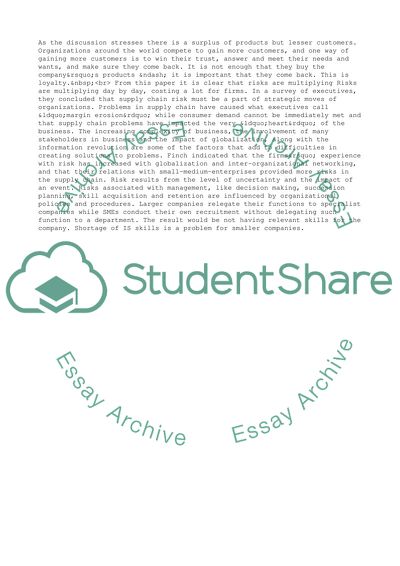Cite this document
(“Customer Focus on Risk Management in the Supply Chain Research Paper”, n.d.)
Customer Focus on Risk Management in the Supply Chain Research Paper. Retrieved from https://studentshare.org/management/1482817-supply-chain-risks-and-operations-management
Customer Focus on Risk Management in the Supply Chain Research Paper. Retrieved from https://studentshare.org/management/1482817-supply-chain-risks-and-operations-management
(Customer Focus on Risk Management in the Supply Chain Research Paper)
Customer Focus on Risk Management in the Supply Chain Research Paper. https://studentshare.org/management/1482817-supply-chain-risks-and-operations-management.
Customer Focus on Risk Management in the Supply Chain Research Paper. https://studentshare.org/management/1482817-supply-chain-risks-and-operations-management.
“Customer Focus on Risk Management in the Supply Chain Research Paper”, n.d. https://studentshare.org/management/1482817-supply-chain-risks-and-operations-management.


